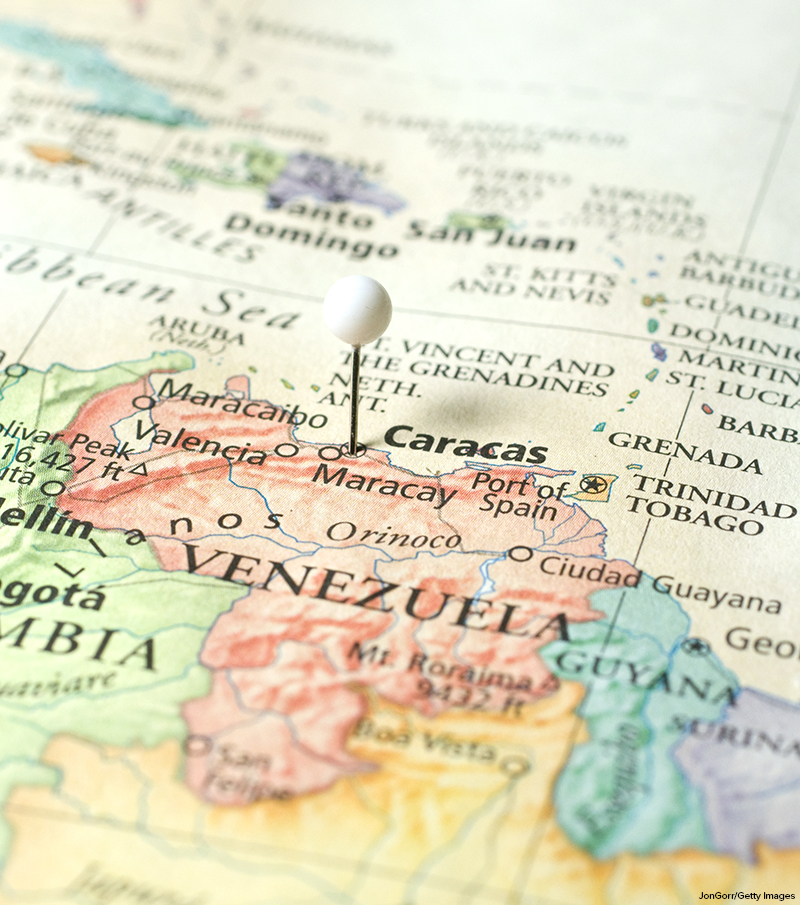
An oil spill near the Caribbean country of Trinidad and Tobago has been declared a national emergency. On February 7, 2024, the nation’s coast guard spotted oil coming from an overturned ship about 4 miles (6 km) off the coast of the island of Tobago in the Caribbean Sea.

Oil has washed ashore and covered about 9 miles (14 km) of coastline on the southwestern side of Tobago. The spill is near Scarborough, a port used by cruise ships. Authorities are concerned that the spill will affect tourism and beaches in the country.
As of Friday, February 23, satellite images showed the oil had spread about 150 miles (278 km) to the northwest. The oil is continuing to move toward Venezuela and the island of Grenada.
Whose Ship Is It?
The barge itself is a bit of a mystery. No emergency calls were made before or after the oil spill and there was no sign of a crew on the ship. Satellite images show that a tugboat was towing the barge from Panama in Central America to Guyana, a country on the northern coast of South America. The 330-foot-long barge is now overturned and abandoned. The tugboat’s location is unknown.
Although divers have spotted the name “The Gulfstream” painted on the side of ship, officials are still searching for the owner and operator.
Cleanup Efforts
Government agencies in Trinidad and Tobago and more than 1,000 volunteers are working to clean up the spill. Energy companies in the country, including British BP, have provided equipment to help with cleanup and investigation. Workers have placed floating booms, or barriers, on the water’s surface to prevent the spilled oil from spreading. They have already cleaned around 2,000 barrels of oil from beaches on Tobago.
So far, divers have been unable to plug the leak in the barge’s hull. Without information on how much or what type of fuel the barge contains, the government can only contain the spill.
Officials are very concerned about the oil’s effect on the local marine wildlife. Oil spills can lead to the death of wildlife in several different ways. The thick black sludge of oil can cover animals’ fur, feathers, or skin, making breathing and movement difficult. Oil also disrupts animals’ ability to regulate their body temperature. That can lead to hypothermia, a dangerously low body temperature, or to hyperthermia, a very high body temperature. The oil can also be poisonous to animals if consumed in food or water.
Oil spills can also affect the habitats. The Petit Trou Lagoon with its dense mangrove trees on the nearby coast of Tobago could be damaged by the oil spill. In a complex ecosystem like this mangrove thicket, oil is very difficult to remove since it coats and smothers the exposed roots. Oil can pollute ecosystems for years following a spill.
Carnival Celebration Continued
Another concern is the effect of the spill on the tourism industry on Tobago. Tourism is an important source of income, providing around 25 percent of the island’s economy.
The spill happened just days before Carnival, one of the country’s biggest tourist events. Carnival is celebrated on Monday and Tuesday before Ash Wednesday, the start of the Christian season called Lent. Festivities include lively street parades, costumes, and masquerade competitions. Government officials are working to contain the spill and keep it from spreading further. They don’t want the spill to cause tourists to change their plans.
